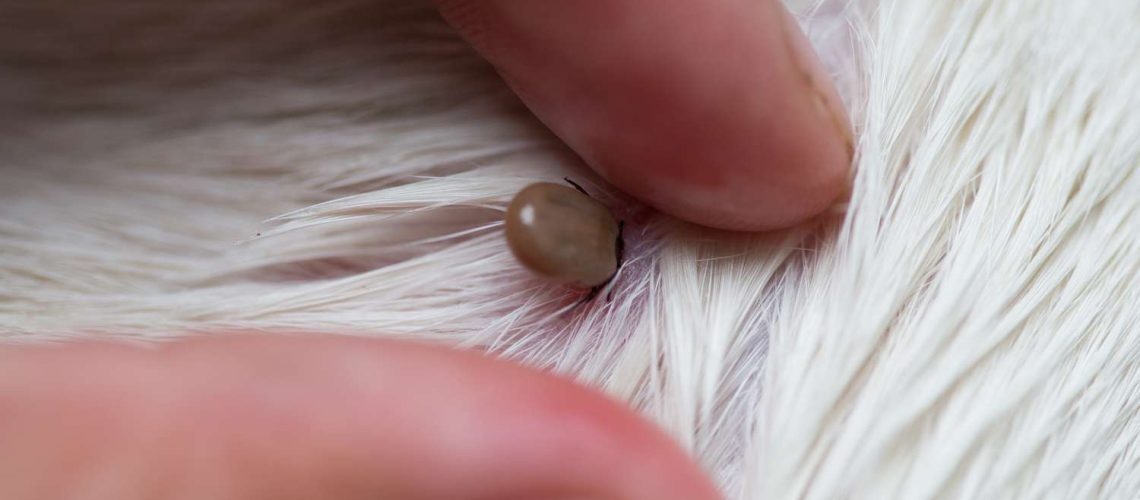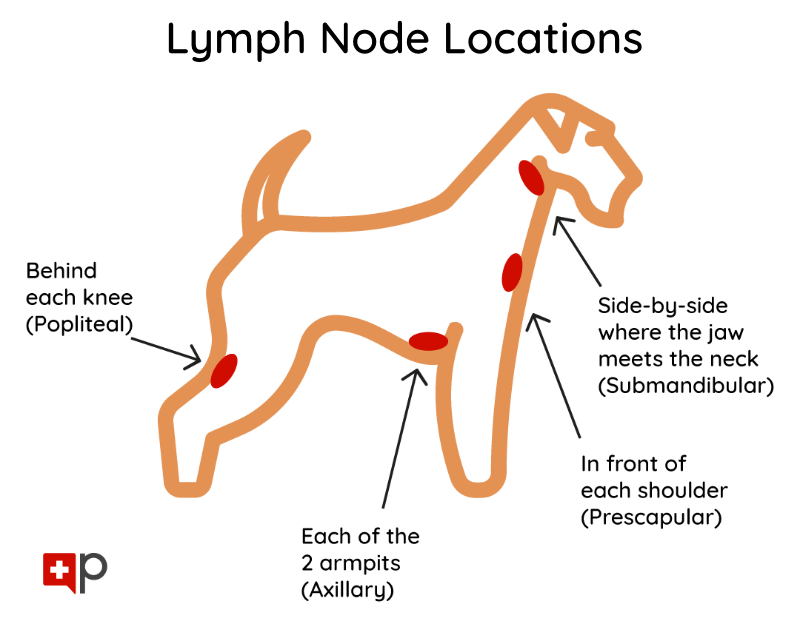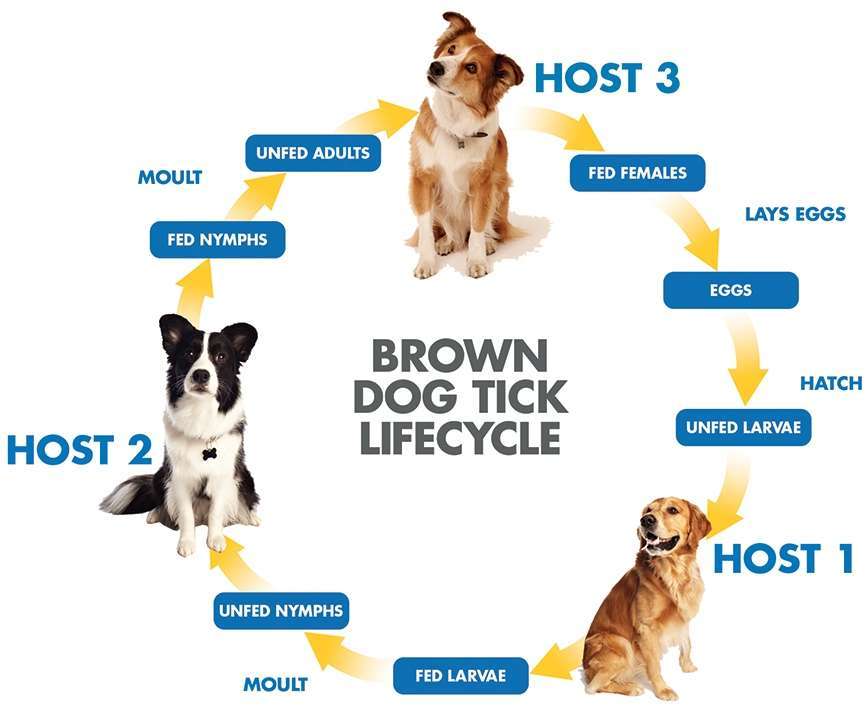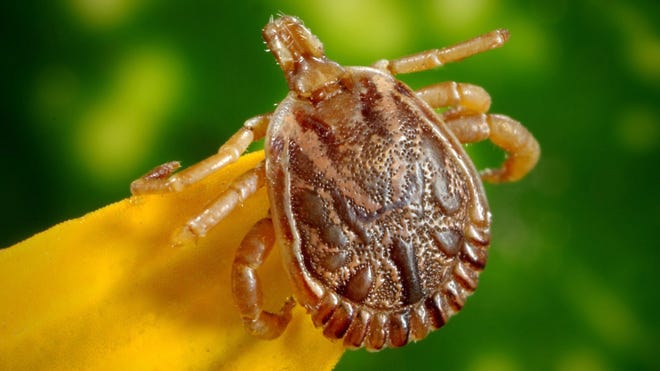Key Takeaways:
-
1. Ticks in dogs can transmit various diseases, including Lyme disease, Ehrlichiosis, and Anaplasmosis.
2. Regular tick prevention measures such as using tick repellents and checking for ticks after outdoor activities are crucial to protect dogs from tick-borne illnesses.
3. It is important to remove ticks from dogs promptly and correctly using tweezers or a tick removal tool to reduce the risk of infection.
4. Signs of tick infestation in dogs may include excessive scratching, fever, lethargy, and swollen lymph nodes.
5. Consulting with a veterinarian about appropriate tick prevention methods, vaccines, and regular check-ups can help ensure a dog's overall health and well-being.
Are you a dog owner who wants to keep your furry friend healthy and happy? If so, then understanding the topic of ticks in dogs is essential for you. Ticks are tiny parasites that can latch onto your dog's skin and cause a range of health problems. By delving into this subject, you will learn how to protect your canine companion from these pesky creatures and their harmful effects. Did you know that ticks can transmit diseases such as Lyme disease to dogs? This makes it even more crucial to gain knowledge about ticks and how to prevent them from infesting your four-legged friend. So, let's dive into the world of ticks in dogs and discover the secrets to keeping your beloved pet safe.
Understanding Ticks and Their Impact on Dogs
Ticks are tiny parasites that can attach themselves to your dog's skin and feed on their blood. These pesky creatures can be found in grassy areas, woods, and even in your own backyard. When a tick bites a dog, it can cause irritation, itching, and discomfort for your furry friend. However, the impact of ticks goes beyond just these annoying symptoms.
Ticks are known carriers of various diseases that can be transmitted to dogs through their bites. These diseases include Lyme disease, Rocky Mountain spotted fever, and ehrlichiosis. If left untreated, these illnesses can have serious consequences for your dog's health. That's why it is crucial to understand the importance of preventing tick infestations and promptly removing ticks from your dog.
The Life Cycle of a Tick
To better understand how ticks impact dogs, let's take a closer look at their life cycle. Ticks go through four stages: egg, larva, nymph, and adult. The larvae hatch from eggs and attach themselves to small animals like mice or birds for their first meal. After feeding on the host's blood, they drop off and molt into nymphs. Nymphs then seek out larger hosts like dogs to feed on before molting into adults.
The Impact of Tick Bites
When a tick bites a dog, it inserts its mouthparts into the skin to feed on their blood. During this process, ticks can transmit harmful bacteria or parasites into the dog's bloodstream. This can lead to various tick-borne diseases that may cause symptoms such as fever, lethargy, joint pain, loss of appetite, and swollen lymph nodes.
It is essential to be aware of these potential dangers so you can take proactive measures to protect your beloved pet from ticks and the diseases they carry.
Spotting Signs of Ticks on Your Dog
Ticks can be a pesky problem for our furry friends, but with a keen eye, you can spot the signs early on. One telltale sign is if your dog starts scratching or biting at a particular area more than usual. Ticks often attach themselves to areas with less fur, such as the ears, neck, or between the toes. So, be sure to check these areas carefully.
Another way to spot ticks is by running your hands through your dog's coat. You may feel small bumps or lumps that weren't there before. These could be ticks hiding in plain sight. It's important to note that ticks can vary in size depending on their stage of life, so keep an eye out for both tiny nymphs and larger adult ticks.
Remember to also inspect any outdoor gear or bedding your dog uses regularly. Ticks can easily hitch a ride and make themselves at home in these items. By being vigilant and checking for these signs regularly, you can catch ticks early and prevent them from causing harm to your beloved pet.
Signs of Tick Infestation:
- Excessive scratching or biting
- Small bumps or lumps on the skin
- Visible ticks on the body
Tips for Tick Spotting:
1. Check areas with less fur like ears, neck, and between toes.
2. Run your hands through your dog's coat feeling for bumps.
3. Inspect outdoor gear and bedding regularly.
The Importance of Promptly Removing Ticks from Dogs
Ticks are not just annoying pests; they can pose serious health risks to dogs if left untreated. When a tick attaches itself to a dog's skin, it feeds on their blood and can transmit harmful diseases such as Lyme disease or Rocky Mountain spotted fever.
Promptly removing ticks is crucial to prevent these diseases from taking hold. The longer a tick remains attached, the higher the chances of disease transmission. Therefore, it's essential to check your dog for ticks regularly and remove them immediately upon discovery.
To safely remove a tick, use fine-tipped tweezers or a tick removal tool. Grasp the tick as close to the skin as possible and gently pull upward with steady pressure. Avoid twisting or jerking motions that could cause the tick's mouthparts to break off and remain in your dog's skin.
After removing the tick, clean the area with antiseptic and keep an eye on your dog for any signs of illness in the following weeks. By acting swiftly and effectively, you can protect your furry companion from potentially devastating tick-borne diseases.
The Dangers of Tick-Borne Diseases:
- Lyme disease
- Rocky Mountain spotted fever
- Ehrlichiosis
Tips for Safe Tick Removal:
1. Use fine-tipped tweezers or a tick removal tool.
2. Grasp the tick close to the skin and pull upward steadily.
3. Clean the area with antiseptic after removal.
(Note: Diagrams can be added using markdown mermaid syntax if desired)
Natural Remedies for Preventing Ticks on Dogs
Ticks can be a pesky problem for our furry friends, but there are natural remedies that can help prevent them. One effective method is using essential oils. Certain oils, such as lavender, peppermint, and cedarwood, have been found to repel ticks. Simply dilute a few drops of the oil in water and spray it onto your dog's fur before heading outdoors. Another natural remedy is apple cider vinegar. Mixing equal parts of apple cider vinegar and water in a spray bottle and applying it to your dog's coat can make them less attractive to ticks.
Using Essential Oils
Essential oils have long been used for their various benefits, including repelling insects like ticks. These oils work by masking the scent of your dog, making them less appealing to ticks. Lavender oil has a calming effect on dogs while also acting as a tick repellent. Peppermint oil has a strong scent that ticks dislike, making it an effective deterrent. Cedarwood oil is another great option as it not only repels ticks but also has antifungal properties that can help keep your dog's skin healthy.
Apple Cider Vinegar Spray
Apple cider vinegar is a versatile natural remedy that can be used for many purposes, including tick prevention for dogs. The acidity of the vinegar makes your dog's skin less attractive to ticks. To make an apple cider vinegar spray, mix equal parts of apple cider vinegar and water in a spray bottle. Spray this mixture onto your dog's fur before going outside or after spending time in areas where ticks are prevalent.
Tick-Borne Diseases: What Dogs Need to Watch Out For
Ticks not only cause discomfort but can also transmit dangerous diseases to our beloved pets. It's important to be aware of these tick-borne diseases and take necessary precautions to protect our dogs. One common disease is Lyme disease, which can cause symptoms like fever, joint pain, and lethargy in dogs. Another disease to watch out for is Ehrlichiosis, which affects the white blood cells and can lead to anemia and bleeding disorders.
Lyme Disease
Lyme disease is caused by a bacterium called Borrelia burgdorferi, which is transmitted through the bite of infected ticks. Dogs with Lyme disease may experience lameness, swollen joints, and loss of appetite. If left untreated, it can lead to more severe complications such as kidney damage. To prevent Lyme disease, it's crucial to use tick prevention products and check your dog for ticks regularly.
Ehrlichiosis
Ehrlichiosis is a tick-borne disease caused by the bacteria Ehrlichia canis. It affects the white blood cells of dogs and can cause symptoms such as fever, lethargy, and loss of appetite. In severe cases, it can lead to bleeding disorders or organ failure. Protecting your dog from ticks is essential in preventing Ehrlichiosis. Regularly checking for ticks after outdoor activities and using tick prevention methods are key steps in keeping your dog safe.
Tips for Protecting Your Dog from Ticks Outdoors
When it comes to protecting your dog from ticks outdoors, there are several measures you can take to minimize their exposure. One important tip is to avoid tall grassy areas where ticks are commonly found. Stick to well-maintained paths or open areas instead. Additionally, consider using tick repellent products specifically designed for dogs. These products come in various forms such as sprays, collars, or spot-on treatments that provide long-lasting protection against ticks.
Avoiding Tick-Infested Areas
Ticks are commonly found in areas with tall grass, bushes, or wooded areas. When taking your dog for a walk or outdoor playtime, try to avoid these tick-infested areas as much as possible. Stick to open spaces or well-maintained paths where ticks are less likely to be present. This simple precaution can significantly reduce the risk of your dog picking up ticks.
Using Tick Repellent Products
Tick repellent products specifically formulated for dogs can be highly effective in keeping ticks at bay. These products usually contain ingredients that repel ticks and prevent them from attaching to your dog's skin. They come in various forms such as sprays, collars, or spot-on treatments. Choose a product that is suitable for your dog's size and follow the instructions carefully for optimal protection against ticks.
How Often to Check Your Dog for Ticks and What to Do If You Find One
Regularly checking your dog for ticks is crucial in preventing tick-borne diseases. The frequency of checks depends on the level of tick activity in your area and how often your dog goes outdoors. As a general guideline, it is recommended to check your dog for ticks daily during peak tick season or after spending time in tick-prone areas. If you find a tick on your dog, it's important to remove it promptly and properly.
Checking Your Dog for Ticks
To check your dog for ticks, start by running your hands over their entire body, paying close attention to areas like the ears, neck, armpits, and between toes. Feel for any small bumps or lumps that could be ticks attached to the skin. If you come across a tick, use tweezers or a tick removal tool to grasp it as close to the skin as possible and gently pull upward with steady pressure.
Proper Tick Removal
When removing a tick from your dog, it's important to do it properly to minimize the risk of infection. Avoid squeezing or crushing the tick, as this can release harmful bacteria into your dog's bloodstream. Instead, use steady pressure and pull the tick straight out. After removal, clean the area with an antiseptic and dispose of the tick by flushing it down the toilet or placing it in a sealed bag.
Remember, prevention is key when it comes to ticks and your dog's health. By implementing these tips and regularly checking for ticks, you can help keep your furry friend safe from these pesky parasites and the diseases they carry.
In conclusion, ticks are small insects that can attach themselves to dogs and cause health problems. It is important for dog owners to regularly check for ticks and take preventive measures to keep their pets safe from these parasites.
What should I do if my dog has ticks?
To remove a tick from your dog, carefully grab it as close to the skin as you can without hurting your pet. Slowly pull it straight out in a smooth motion, avoiding any sudden movements. Be careful not to leave any parts of the tick behind, as this could cause an infection.
Should I be worried if I found a tick on my dog?
If you discover a tick on your dog, there's no need to panic. In most cases, tick bites don't harm dogs. Even if your dog is taking tick prevention medication, a tick might still bite them, but it will die before it can cause any harm.
What kills ticks on dogs immediately?
If you see any ticks already attached to your dog, it is recommended to physically remove them. Killing the tick instantly can be done by submerging it in original Listerine or rubbing alcohol.
What happens if you don't remove a tick from a dog?
Ticks have the ability to bite and feed on dogs or cats for a few days before dropping off. During this period, there is a risk of the tick transmitting Lyme disease, a serious bacterial infection, to your pet. It is important to note that while Lyme disease can affect dogs, cats, and humans, it is relatively rare in cats.
How long will a tick stay on a dog?
Ticks, particularly adult ones, are most active in the spring and fall seasons and can stay attached to a host for 7-10 days. On the other hand, baby ticks, known as nymphs and larvae, are most active in the summer and typically detach after 3-4 days. The longer a tick remains attached to your pet, the higher the chances of transmitting disease-causing bacteria or viruses.
Will a dog be OK after a tick bite?
According to most veterinarians, it is not necessary to take your dog to the vet after a tick bite. However, you should keep a close eye on your dog for any signs or symptoms of Lyme disease over the next few weeks or months.

















